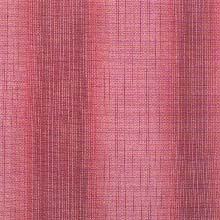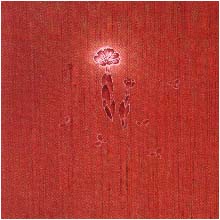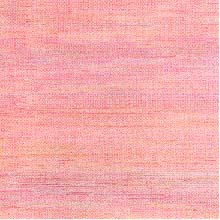Weave (p. 39 )
1. Produced in Yonezawa City, Yamagata Prefecture.
2. Characteristics: The threads used for this fabric are dyed with "Benibana"(Carthamus tinctorius, safflower).
3. Uses: Clothing.
4. History: The Benibana's origin was in Egypt and was transplanted in old times to Japan via India and China. The Benibana, it is said, was first cultivated in this district in the end of the Muromachi Period. It is also said that the Feudal Lord, Yoshimitsu Mogami, of the Yamagata Castle had it transplanted or that merchants had brought it into this district. The Benibana in this district was called "Mogami Koka"(Benibana in Mogami, old name of the district) and was most popular as a dye and cosmetic, called "Kyo Beni"(rouge in Kyoto) in the Edo Period. The production, however, fell in the Meiji Period when chemical dyes became popular and the Benibana became an illusional flower just after the World War II. In the early 1950's , there were those who hoped to revive the Benibana dyeing and started studying how to grow it and how to use it as a dye. In 1964, they succeeded in producing Benibana Tsumugi, pongee, and produced here: "Osaen Benibana Tsumugi" dyed with Benibana, "Ai"(indigo), walnut and "Kariyasu"(Miscanthus tinctorius) and "Benibana Teori Tsumugi", hand woven pongee.
Dyeing Method
1. The Benibana, which are picked when they are mostly blossoming, are trampled by bare foot and then fermented. A solid, called "Benibana Mochi" is made after the fermented flowers are crushed, dried and pressed.
2. The Benibana solid, which is put in a hemp bag, is soaked in tepid water for two hours until the water gets yellow. This process is repeated twice. The yellow liquid can be used as liquid dye for yellow.
3. The Benibana solid is soaked in a tepid potassium carbonate liquid, and a reddish liquid is obtained. The liquid becomes the dye used for the Benibana Tsumugi.
4. Both red and yellow are extracted from Benibana. If indigo is added, it is possible to obtain any color.





